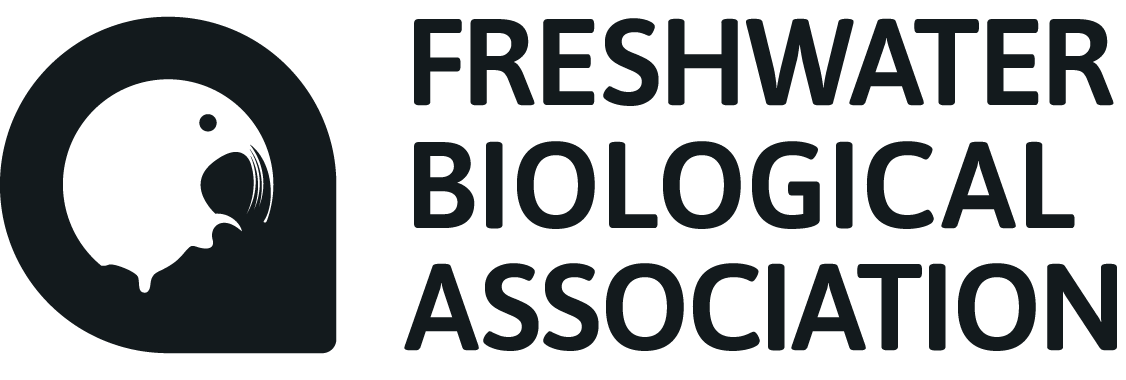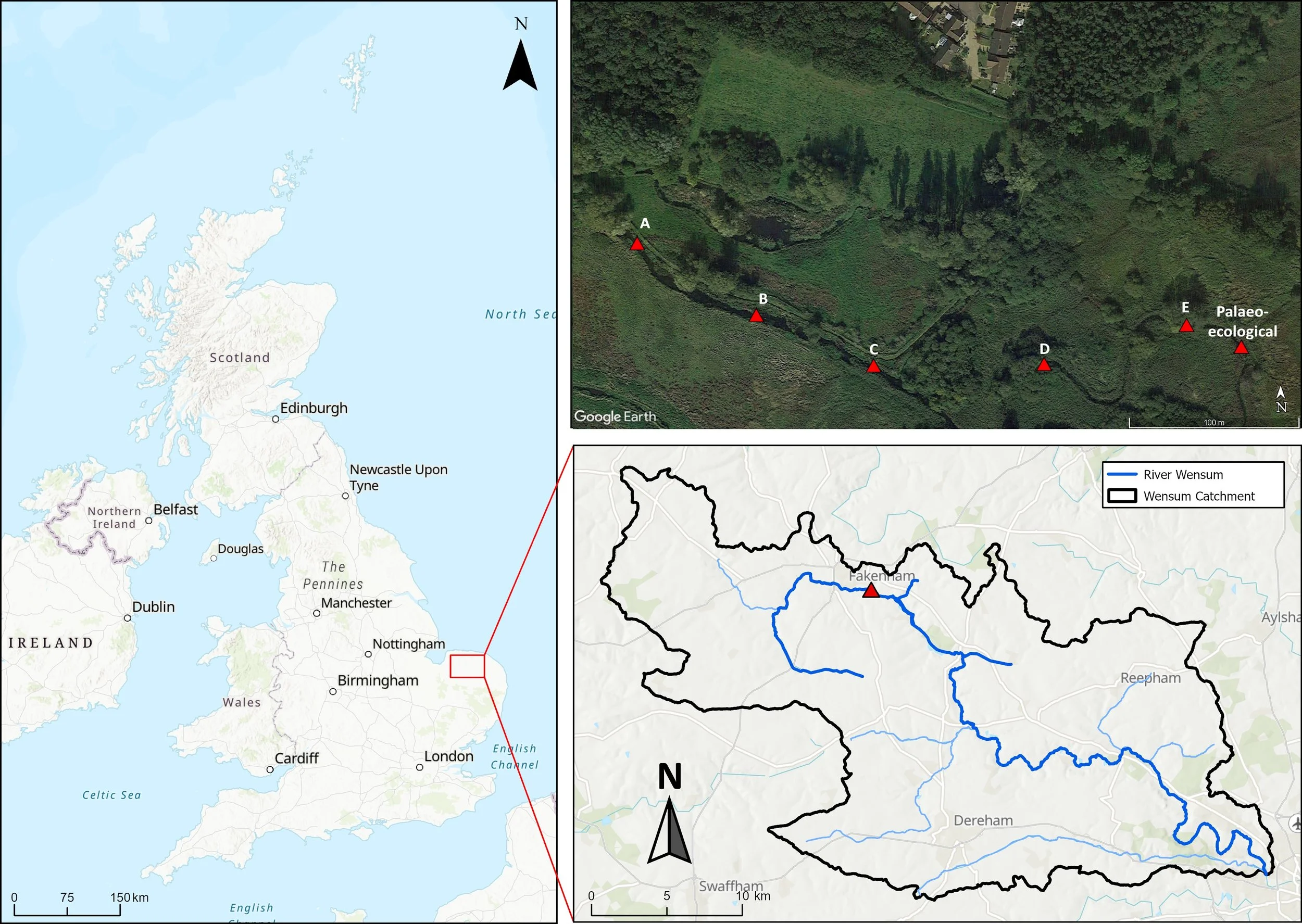Science Articles & Reviews
Introducing our series of FBA Voice science articles, edited by Rachel Stubbington, Nottingham Trent University. This section also includes some personal reviews.
Rachel is both a Fellow of the Freshwater Biological Association and long-standing Editor of FBA science articles. If you would like to write an article for publication on this webpage, please contact Rachel at: rachel.stubbington@ntu.ac.uk
FBA Voice is the monthly newsletter of the Freshwater Biological Association
Survival of young freshwater pearl mussels: insights from in-situ experiments in two northern rivers
Samantha Bonny is the FBA’s River Kent Project Officer and also works on the freshwater pearl mussel breeding programme. Here, Samantha and collaborators report on trials they ran to assess whether the rivers Esk and Kent would be suitable for population reinforcements of juvenile mussels, thus supporting future populations of this endangered species.
Understanding chemical impacts on freshwater microbial communities
Here, Holly Tipper, Amy Thorpe, and Daniel Read from UK Centre for Ecology & Hydrology, report on their work on the PAthways of Chemicals Into Freshwaters and their ecological ImpaCts (PACIFIC) project, which is investigating how human-made chemicals enter freshwater ecosystems and the impacts they have, particularly on microbial communities.
The Freshwater Biological Association of the British Empire – A colonial story of ambition and changing names
Catherine Duigan is an FBA Fellow, an honorary Professor of Environmental Science at Aberystwyth University and an independent environmental consultant, researcher and writer living in Wales. In this article, Catherine explores the significance of recently discovered records of the early history of the FBA.
SEFS14: A personal reflection
Join Paul Leonard for his review of SEFS14, the 14th Symposium for European Freshwater Sciences, held in Bolu, Türkiye, from 21-25 July, 2025. Established in 1992, Bolu Abant İzzet Baysal University is situated approximately 250km east of Istanbul. This was the first time SEFS has been held in a non-European country, but this did not deter over 200 participants from 45 countries that included China, Russia, Nepal, the USA and Australia.
Charming the Charr
Simon Johnson introduces the exciting new LD-CHARM (Lake District Charr Recovery & Management) project. Simon is Executive Director of the Freshwater Biological Association, based in Windermere. He is a former Director of the Wild Trout Trust and the Eden Rivers Trust, and has worked as an independent consultant for river and catchment restoration. This article is reproduced with kind permission from the Wild Trout Trust.
Exploring the past to restore our rivers: Insights from the River Wensum
James White is a research fellow specialising in water sciences at the University of Birmingham. Here, James and colleagues report their collaborative research in which palaeoecological data was used to contextualise freshwater ecosystem recovery following a restoration project on the River Wensum. This article summarises the research presented by White et al. (2025), which formed part of a wider special issue on river restoration practices.
Species on the edge: Arctic charr at the southern extent of its range
Louise Lavictoire is the FBA’s Head of Science and an expert in the conservation of rare freshwater species. Here, Louise and colleagues introduce Lake District Charr Recovery and Management (LD-CHARM), a new project that seeks to inform protection of threatened populations of the Arctic charr.
What dries ahead? How future droughts could shape biodiversity in UK rivers
Rachel Stubbington and Romain Sarremejane from Nottingham Trent University, and Glenn Watts from the UK Centre for Ecology & Hydrology, are researchers interested in the ecological effects of drought and river drying on freshwater biodiversity. Here, they consider how future droughts could alter the communities in UK rivers, and if these events could drive communities and ecosystems to new stable states.
A fascination with (lesser) flamingos
Lesser flamingos (Phoeniconaias minor) are fascinating birds. The only vertebrate to subsist on bacteria and algae, they mostly filter-feed the colonial cyanobacterium spirulina (Arthrospira fusiformis) from the surface waters of tropical African soda lakes. David Harper led research teams to Kenyan and Tanzanian lakes from 1982 until his retirement in 2015. In this – his second of two recent articles – David recalls his work with soda lakes and lesser flamingos.
Lough Derg: A pioneering limnological laboratory
Limnology, the science of lakes, had a slow start in Britain. The first limnological laboratory in Europe was established in Germany in 1892 and was followed by similar ventures in Denmark and Austria. Today, not many people know that the first limnological laboratory in Britain and Ireland was established on Lough Derg on the River Shannon in 1921. In this article, Glen George, Honorary Research Fellow with the FBA, describes the pioneering work carried out by scientists based at Ireland’s Lough Derg laboratory between 1921 and 1923.
Ancient names for lakes and rivers in Cumbria
Some of the oldest cartographic names in Britain are those associated with lakes and rivers. One area that has retained many ancient names is the modern county of Cumbria. The Anglo-Saxons only reached the area at the end of the 7th century and were displaced by the Strathclyde Welsh in the 10th. Tracing the roots of these names can thus be difficult, because they include elements from several languages. In this article Glen George, Honorary Research Fellow with the FBA, explores the ancient roots of some lake and river names in Cumbria.
Small-scale habitat additions engage local communities and support ecosystem restoration in New Zealand streams
River restoration projects often focus on riparian management actions such as planting and fencing. Isabelle Barrett from Waterways Centre, Lincoln University, New Zealand, discusses how such projects can help rivers to recover from degradation, and explores how successful recovery of instream communities requires additional steps targeting physical habitat quality.
The sad tale of Lake Naivasha, Kenya; a mountain of underused knowledge?
There is arguably no lake anywhere in the world that has greater combined economic value and scientific knowledge than Lake Naivasha, a freshwater lake at 2,000 m altitude in Kenya’s Rift Valley. Here, David Harper, FBA Fellow and Emeritus Professor at the University of Leicester, reviews the past and looks to the future of the lake and its alteration by human pressures.
The Climate+ Co-Centre: A new initiative to address water challenges on the Islands of Ireland and Great Britain
Mary Kelly, Professor of Applied Freshwater Ecology at University College Dublin and FBA Fellow, introduces the Co-Centre for Climate + Biodiversity + Water, which launched in January to undertake research providing evidence and urgently needed solutions for the interlinked climate change, biodiversity loss and water quality degradation crises.
Predicting nature recovery: a new vision for river restoration planning and ecosystem assessment
Martin Wilkes from the School of Life Sciences, University of Essex, provides a new vision for river restoration planning and ecosystem assessment, in response to new laws in England intended to stem biodiversity loss, placing rivers at the heart of national efforts to promote nature recovery.
Integrating citizen science into catchment management: Lessons learnt from the River Chess
In this article, Kate Heppell and Hannah Parry-Wilson introduce the River Chess Smarter Water Catchment project, which is funded by Thames Water and delivered by a partnership of eight stakeholder organisations who share an interest in the health of the River Chess.
Restoring chalk streams in a changing climate
By Richard Handley & Judy England
Richard Handley is the Chalk Stream Manager at the Environment Agency and President of the Chartered Institute of Ecology and Environmental Management. Judy England is a National Research Scientist within the Environment Agency’s Chief Scientist’s Group, an FBA Fellow and a member of the River Restoration Centre Advisory Board.
Towards ecologically relevant fine sediment targets in chalk streams
By Beth Mondon
Beth Mondon is a Fluvial Geomorphologist at AECOM who recently completed her PhD at the University of Southampton. Here, Beth discusses the fine sediment problem in chalk streams and key findings from her research on the development of ecologically relevant fine sediment targets.
Avoiding extinction: Conservation breeding and population reinforcement of the freshwater pearl mussel
By Louise Lavictoire & Chris West
Freshwater mussels are among the most threatened taxa in Europe with the freshwater pearl mussel (Margaritifera margaritifera) experiencing declines of over 90% during the 20th century.
Book review: Lakes in the Anthropocene: Reflections on Tracking Ecosystem Change in the Arctic
Lakes in the Anthropocene: Reflections on Tracking Ecosystem Change in the Arctic, by John P. Smol
Benoît Demars reviews this important new textbook.





















